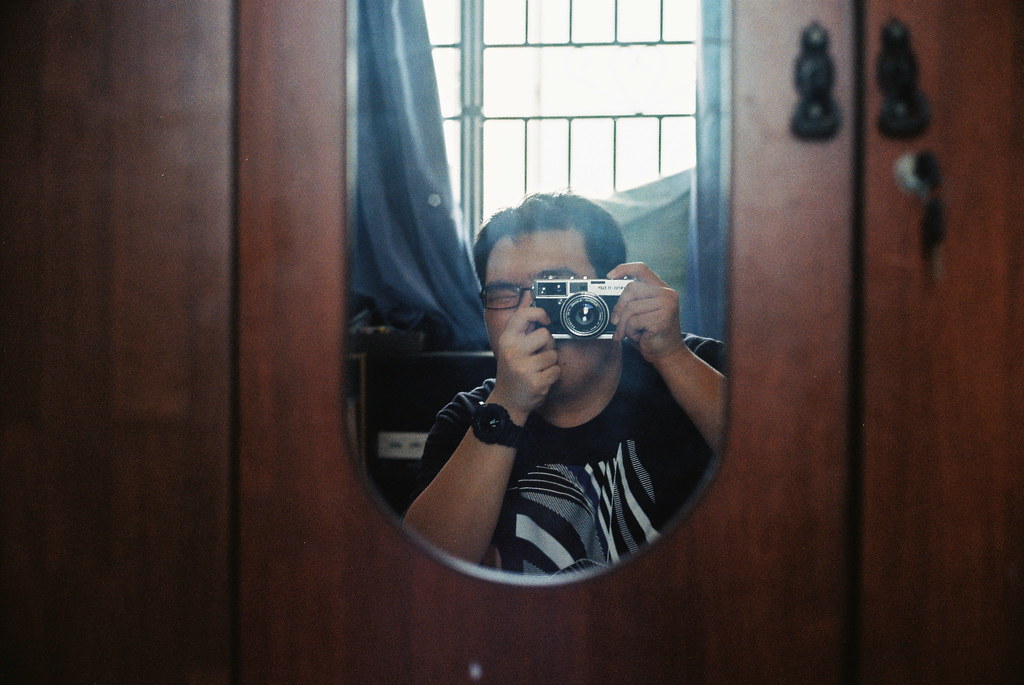There will be some point in time as a photographer, when you hear the following comment: “ If I had a Leica, my pictures will be better”. In my POV, this means that better pics can be obtained very easily by shooting with a rangefinder. Well, as a person who likes to try something hands-on to learn the truth, I toddled off to eBay and got myself a great condition Olympus 35 SP. I can’t get a Leica by default as I don’t have as much pocket change as Warren Buffet, so I looked for the most affordable and closest alternative. Luckily enough, I found it in the form of this damn pretty rectangular box. This part will serve as a short introduction to one of the most revered rangefinders from Olympus and how it basically works.
For the benefit of those who don’t know what the 35 SP is, this is a compact rangefinder made by Olympus Tokyo back in 1969. Unlike the Leica Ms, it is a fixed lens rangefinder (RF) using a really sharp 42mm G.Zuiko 7 elements lens (G being the 7th alphabet). I kind of like this focal length, as it’s a representation of the best of both worlds, smack in between the ubiquitous 35mm and 50mm focal lengths. It was also one of the 1st ever RFs to utilize a spot metering system, activated by pressing a button at the back of the camera (I never used it even once though, as the metering is pretty much accurate out of the box). What I really loved about the 35 SP, though, is just how magnificent it looks. A representation of the bygone eras when cameras LOOKED like cameras. It sounds like one, feels like one, and shoots exactly like one, unlike our iPod generation devices that take pics by pressing on the LCD. The 35 SP also used a Seiko FLA shutter that is unusually quiet, but that’s stating the obvious, since almost all rangefinders I know of use leaf shutters that are located within the lens. The benefit of it, compared to using the conventional mirror box in DSLRs, is that the shutter sound is very quiet and nearly inaudible in some cases. A vital element in candid street photography.
One additional note I’d like to point out (a very good one indeed), is that the 35 SP is a fully mechanical camera. Meaning? It can shoot, at all speeds and all apertures, without using a battery. Indeed, it’s a bloody godsend compared to today where we’ll be left helpless once our cameras run out of energy. This is similar to the Olympus OM-1, my first film SLR that also happens to be fully mechanical. No chargers, no wires, no bull. Although the 35 SP has a battery chamber, it’s only meant to power the TTL light meter. I practically shoot all the time in manual mode without metering anyways, so the lack of a battery is just a small inconvenience at times when I have to shoot in tricky lighting.
Onto how a RF works. As most of you would already know, Leica M rangefinders focus using a patch in the middle of the viewfinder. What this means is that everytime an object you’re focusing on is out of focus (OOF), you will see 2 separate rectangles in the viewfinder. The 2 rectangles will have a ‘cloned’ image of the object you want to focus on. In order to focus, you simply have to align the two squares until the overlap each other as one single entity. Sounds easy enough right? Actually, no. There are obviously advantages and disadvantages to using such a method to compose, and I shall explain why later on. Please bear in mind that my experience of using an Olympus RF may not necessarily translate to that of using a Leica M. I’m basing my opinion only on the similarty in function between them. They both use patch focusing, they both use film, they both look like rectangular boxes yada yada…………you get the dirft. But I won’t be making direct comparisons since a Leica M is a Leica M, and everything I know about it is based purely on literature. I shall explain the actual experience in Part II of this article, by highlighting the pros and cons at the same time. Thank you for reading.




Lovely article, I look forward to reading part II!
ReplyDeleteHas anyone been able to find out which is the best product among those listed here?:-)
ReplyDelete